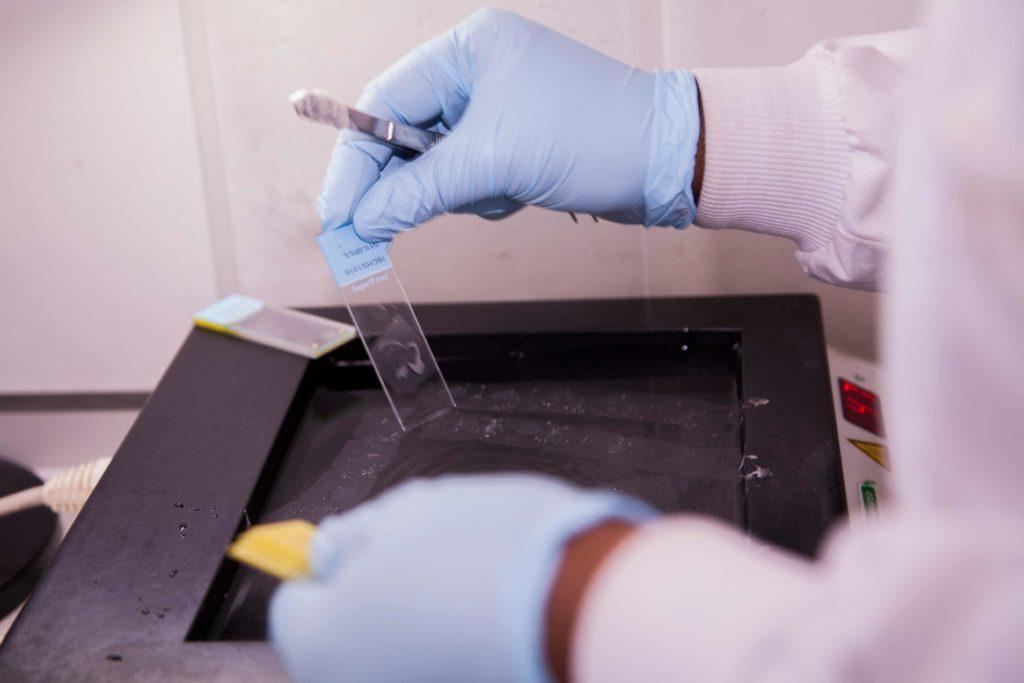Cervical Screening Awareness Week
This week (10-16th June) is Cervical Screening Awareness Week, an initiative started by Jo’s Cervical Cancer Trust, which aims to raise awareness of the importance of cervical screening. In the UK, approximately 3,200 women are diagnosed with cervical cancer annually, making it the 14th most common cancer in women. Cervical screening, otherwise known as a smear test, can help to prevent cervical cancer which sadly claims the lives of about 870 women per year in the UK.
The importance of cervical screening
 Almost all cervical cancer cases are caused by an infection of the cervix by the human papillomavirus (HPV). At least 15 types of HPV are considered high-risk for cervical cancer, with HPV strains 16 and 18 being responsible for the majority of cases. Cervical screening plays an important role in preventing cervical cancer, as it can identify abnormal changes within the cells of the cervix that may predispose them to becoming cancerous.
Almost all cervical cancer cases are caused by an infection of the cervix by the human papillomavirus (HPV). At least 15 types of HPV are considered high-risk for cervical cancer, with HPV strains 16 and 18 being responsible for the majority of cases. Cervical screening plays an important role in preventing cervical cancer, as it can identify abnormal changes within the cells of the cervix that may predispose them to becoming cancerous.
Before HPV-infected cells become cancerous, they undergo a series of changes to become abnormal, though are still benign. At this stage, the cervix remains asymptomatic. It has symptoms only on becoming cancerous, and even then, can present late with non-specific ones such as unusual vaginal bleeding, changes in vaginal discharge and dyspareunia.
Cervical screening allows cells to be identified when they become abnormal. The abnormal cells, once screened for, can be further investigated to determine an appropriate course of treatment. This ensures that there is minimal chance of these cells becoming malignant. It is therefore paramount that women attend their cervical screening appointment.
Under the current NHS Cervical Screening Programme, women between the ages of 25 and 49 are invited for a smear test every 3 years, and women between the ages of 50 and 64 every 5 years. This is because cervical cancer is most common in 25- to 64-year-olds, with the highest incidence in those between the ages of 25 and 29. Despite the importance of cervical screening, 1 in 4 women skip their screening test.
Our research - HPV testing versus smear tests
As almost all cervical cancer cases are caused by HPV infection, research has suggested that tests to determine the presence of HPV infection within cervical samples may be more accurate as an initial cervical screening method than identifying abnormal cells using smear tests. As a result, next year the UK will introduce HPV testing as the primary cervical screening method.
Although HPV testing will initially be conducted on samples collected by a medical professional, there is much interest in conducting these tests on self-collected samples in the future. Therefore, research from the Centre for Cancer Prevention (Wolfson Institute of Preventive Medicine, Queen Mary University of London) led by Professor Jack Cuzick, recently compared the positivity rates and viral loads of HPV in self-collected vaginal samples and urine samples. The samples were collected using four different devices in order to evaluate the most efficacious method of collection.
To build upon this work, the researchers endeavour to conduct a study to compare self-collected samples with clinically-collected samples from the same women when they attend a routine smear test in order to determine whether self-collected samples can yield the same results as those collected within the clinic. It is hoped that self-collection of samples may encourage more women to participate in cervical cancer screening programmes, and ultimately help to prevent more cervical cancer cases.
Article co-author: Yee Neng Adaylia Faith Loo, Medical Student
Category: General News

No comments yet